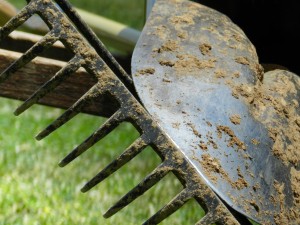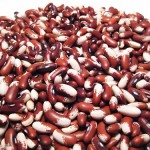October is a lovely time of year for dividing and transplanting in your gardens. The urgency of spring gives way to a slower pace of planning.
There are many reasons to divide perennials: to keep them healthy and free of diseases, to have more plants, keep them contained to an area, to open up space.
- Many perennials grow quickly and develop clumps. If the clumps are not divided every 3-4 years, the centers can die out. (Note: with many ornamental grasses this donut effect is due to high pruning—ornamental grasses should be trimmed to ground level.)
- When perennials become overcrowded, flower production declines or ceases. The perennial may appear stunted if they are in desperate need of dividing—in which case, you’ve waited too long and will need to remember to divide sooner next time.
- Some perennials are aggressive, nearly weedy in their growth habit—oh the sins of Lily of the Valley! Those with a vigorous growth habit should be divided (often every other year) to keep them in balance and not overrun the garden.
- Dividing your perennials allows you to use more of the same variety (especially those that are hybrids without viable seeds) throughout your gardens, and to share with friends.
Transplanting herbaceous plants is usually best done in the spring or fall Follow this link to a Garden Gate Tip’s Sheet on what to move when.
In autumn cut plants back before digging them for division. I prefer to divide in the fall because the plants have more time to set new roots before growing into summer’s heat. Fall bloomers are divided and transplanted in the spring.
Fine Gardening offers this advice on technique:
To lift a perennial with minimal root damage, begin digging at its drip line. The roots will generally extend that far, so digging there lets you lift the plant with most of its roots intact.
Dig a trench around the clump, cleanly severing any roots, then cut at an angle down and under the clump from various points around the outer edge until you can lever the plant out of the hole. For large, heavy plants, you may have to first dig the trench, and then slice straight down through the center of the plant as if it was a pie, halving or quartering the clump before undercutting and lifting it.
If you find that you will be moving perennials when it’s hot and sunny, anticipate the potential for excessive transplant shock and protect your plants from too much sunlight, heat and wind until they are established.
Trees and shrubs grow roots beyond what can be realistically moved. To prepare hardwoods for transplanting, and develop new roots in a smaller area, they need to be root pruned. Established trees and shrubs—I’m talking bigger than the potted ones from big box stores—to be moved in the autumn should be root pruned in March. If you know which mature hardwood you want to move, tag it now to be pruned early spring and moved next October. Clemson University has an excellent article on transplanting established trees and shrubs.
I check the weather report for the week following an anticipated transplanting date, and look for a day of rainy, at least cloudy, weather. I will transplant late afternoon the day before a rain. The rains will take the place of hand watering and the high humidity will reduce the stress on the plant, and allows roots to set well in damp soil.
Plan ahead for moving plants, prepare and be attentive after the uprooting. After the wilt, new buds will emerge!
(Photo by pippalou at morguefile.com )













